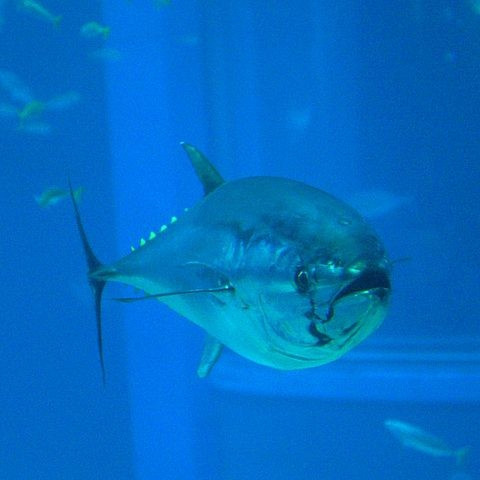Radioactive Bluefin Tuna: Great Monster-Movie Idea, But No Threat To Humans, Scientists Find

Bluefin tuna migrating from Japan to Southern California are bringing a little excess baggage with them -- radioactive cesium isotopes originating from the Japanese nuclear power plant damaged by last year's tsunami, according to a new study.
But don't feel the need to quarantine your sushi just yet: The amount of radiation in Pacific bluefin tuna -- many of which make a nearly 5,000-mile journey across the ocean when they are young -- found by Stanford University and Stony Brook University scientists was well below safety standards in the U.S. and Japan, and well below the levels of other naturally occurring radioactive isotopes in the fish.
(You might want to avoid Pacific bluefin for ethical rather than health reasons though: While this species isn't dwindling as fast as its endangered Atlantic cousin, the Monterey Bay Aquarium's Seafood Watch advises seafood lovers to avoid bluefin from either ocean, saying they're being killed faster than they can reproduce.)
According to a report published Monday in the journal Proceedings of the National Academy of Sciences, scientists found a tenfold increase in concentrations of radioactive cesium-134 and cesium-137 in 15 bluefin tuna samples collected from San Diego fishermen as compared to samples taken in 2008.
But the concentration of naturally occurring radioactive potassium in bananas is higher than what we found in the tuna, Stanford marine biologist and lead author Daniel Madigan said in a phone interview.
Madigan and his team focused on the two cesium isotopes because they don't decay quickly, unlike other radioisotopes released by the Fukushima disaster. Whereas the isotope iodine-131 has a half-life of around eight days -- in other words, after eight days half of a sample of iodine-131 will have transformed into the more stable xenon-131 -- cesium-134 and cesium-137 have half-lives of two years and 30 years, respectively.
Cesium-137 has the capacity to stick around for a really long time, Madigan says.
While a kilogram of dried bluefin tuna that migrated after the Fukushima accident had an average of 4 becquerels (bq) of cesium-134 and 6.3 bq of cesium-137, they also had an average of 347 bq of naturally occurring potassium-40. (A becquerel is a standard measurement for radiation output; radiation doses are measured in either sieverts or millirems, but scientists aren't sure how much radiation is transferred through consumption of contaminated tuna.)
The Japanese government recently lowered its maximum safety limit for radioactive cesium isotopes to 100 bq per kilogram in wet weight -- equivalent to about 400 bq per kilogram of dried meat, the authors say.
The authors think the cesium-134 they found in the tuna has to be fallout from the March 2011 accident because before the Fukushima disaster, there was no detectable cesium-134 in seawater or fish from the Pacific.
Tuna pick up the radioactive bits of cesium mainly through two vectors: eating other contaminated fish and taking in contaminated water through their gills. It's still unclear which activity -- eating or breathing -- contributes more to the uptake of radiation.
That's an important question to answer when examining animals like seabirds, whales and dolphins that breathe at the surface and which might also transport radiation, the authors say.
The radioactive cesium enters the tuna's muscles, but it doesn't stick around. Madigan says the fish excrete it out at a rate of about 2 percent per day, meaning that had the fish they tested last year been plucked out of the water today, they'd be practically radiation-free.
© Copyright IBTimes 2024. All rights reserved.





















